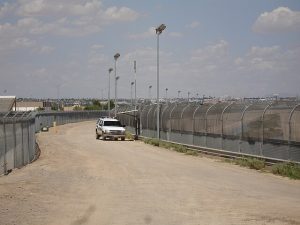Over 75% of earth’s land is permanently drying: UN report
3 min readA United Nations report released on Monday highlights a growing crisis affecting the planet: over 75% of Earth’s land is permanently drying out, severely impacting ecosystems and threatening both plant and animal survival. This alarming finding was unveiled at the U.N. summit in Riyadh, Saudi Arabia, where countries are meeting to address desertification, a process where once-fertile lands transform into deserts due to rising temperatures driven by human-induced climate change, deforestation, and water scarcity.
The report reveals that, between 1970 and 2020, more than three-quarters of the world’s land has experienced increased dryness compared to the previous three decades. This trend is contributing to widespread ecological damage, affecting biodiversity and the ability of ecosystems to function.
The summit, which began last week and is set to conclude on Friday, is focused on combating droughts and addressing land degradation. Nations are deliberating on how to improve their response to water scarcity, both in the short term — through better management of droughts — and the long-term issue of land degradation, which is often irreversible.
If current global warming trends persist, the situation is expected to worsen. By the end of the century, nearly five billion people, including large populations in Europe, the western United States, Brazil, eastern Asia, and central Africa, could be affected by persistent dryness, up from about a quarter of the world’s population today. The report underscores the urgent need for action to prevent this massive scale of impact.
Sergio Vicente-Serrano, one of the lead authors of the report, explained that the heating atmosphere, exacerbated by the burning of coal, oil, and gas, leads to increased evaporation rates. As a result, water becomes scarcer, which severely limits its availability for humans, plants, and animals. The diminishing water supply has a profound effect on agriculture, making dry lands less productive and diminishing crop yields, which also impacts the availability of food for livestock. This scenario threatens to exacerbate food insecurity in many regions around the world, adding to the pressures faced by vulnerable communities.
The report also highlights another consequence of widespread dryness: migration. As rainfall becomes more erratic, and as land continues to degrade, more people are forced to move in search of better living conditions. Areas that are particularly vulnerable to these changes include southern Europe, the Middle East and North Africa, and southern Asia. In these regions, water scarcity and land degradation are making it increasingly difficult for people to thrive economically and sustain their communities.
One of the main challenges identified in the report is the lack of sufficient global efforts to prevent or mitigate the impacts of land degradation. While some countries have implemented strategies to combat desertification, much more needs to be done on a global scale. The report urges nations to strengthen international cooperation and commit to long-term solutions that address the root causes of the crisis, including reducing carbon emissions and investing in sustainable agricultural practices.
In addition, the U.N. report calls for greater efforts to restore ecosystems, improve water management, and promote sustainable land use. This includes supporting the reforestation of degraded areas and adopting soil conservation techniques to prevent further erosion. It also emphasizes the need for better data and monitoring systems to track the extent of land degradation and provide governments with the tools to make informed decisions.
Despite the growing challenges, the report also highlights the potential for positive change. By taking immediate and coordinated action, the world can slow the rate of land degradation and begin to reverse some of the damage. There are already examples of successful restoration projects in certain regions that offer hope for the future.
The summit in Riyadh is an important step in this direction. Governments, environmental organizations, and experts are engaging in dialogue to explore ways to reduce the impact of land degradation and droughts on global populations. The hope is that through collective action, the world can address the crisis of drying land and build a more sustainable future for all.
In conclusion, the drying of Earth’s land is one of the most pressing challenges of our time, and the U.N.’s latest report serves as a stark reminder of the urgency of the situation. While the road ahead may be difficult, the solutions to this crisis are within reach if the global community acts decisively. Protecting our land, water, and ecosystems is essential not only for environmental sustainability but for the well-being of current and future generations.








